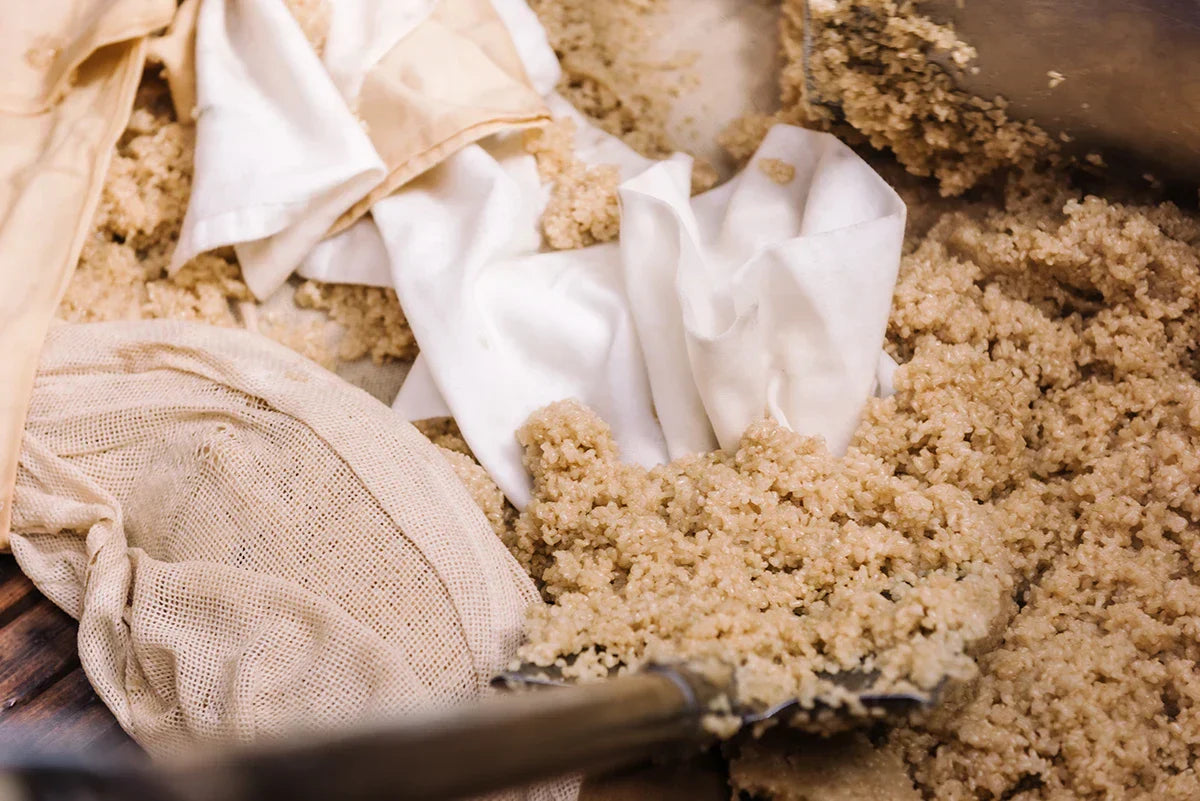
You’ll likely be more than familiar with the tang of bitterness, the addictiveness of sugar, the satisfaction of salt, and that strange trait of sour that leaves us wanting more. Chances are you’ve even heard of umami - the fifth taste. Of course you have; it’s old news now! But what if we told you there was a new ‘sixth taste’ in the hot seat
Enter kokumi. Often described as the secret ingredient, kokumi has become key to creating deeper and richer flavours in the kitchen, and has captivated the hearts (and tastebuds) of chefs, scientists and budding culinary amateurs alike.
Whether you’re a top chef, or self-confessed foodie, Japanese ingredients experts The Wasabi Company, dive deep into the world of kokumi, and its ability to elevate food into a whole new realm of taste and enjoyment.
What is kokumi?
Kokumi has been part of Japanese culinary traditions for centuries. It is derived from ‘koku’ meaning rich and ‘mi’ meaning taste. But unlike fellow flavour profiles like sweet, bitter, and umami, ‘kokumi’ isn’t technically a taste; it’s actually a flavour modifier that provides a more complete tasting experience, embodying characteristics such as mouthfulness, continuity, and even ‘craveability’.
 Soybeans fermenting during the soy sauce making process
Soybeans fermenting during the soy sauce making process
Despite being difficult to define, kokumi occurs naturally in fermented and aged foods like soy, miso, aged cheeses, yeast extracts, and fermented fish sauces. Although we’re using the term ‘taste’ for the purposes of this article, kokumi doesn’t actually have its own distinct flavour. Instead it’s almost like an optional extra that’s used to enhance other tastes and flavours, to draw out their uniqueness. As opposed to the distinct tang of salt and the savoury meatiness of umami, kokumi is often associated with a rich or ‘full’ sensation in the mouth.
By adding kokumi to the right dishes, foodies can experience a more rounded flavour; sweetness becomes more pronounced in reduced-sugar dishes, and foods can taste richer, deeper, and more full-bodied - almost as if they’re being enjoyed with a glass of aged red wine.
If umami is the ‘bass note’, then kokumi is the amplifier. Soybeans fermenting with koji during miso production
Soybeans fermenting with koji during miso production
The science behind kokumi
Unlike the tastes we learned about in high school, kokumi isn't formed by single molecules, but rather glutamyl peptides, which are compounds that form naturally during the breakdown of proteins in aged and fermented foods. When we eat them, these peptides interact with calcium receptors on our tongue, sending amplified signals to the brain and enhancing the depths of the flavour that we’re tasting. The signal that the brain receives from our tastebuds essentially receives a shot of adrenaline; mushrooms taste earthier, chicken becomes richer, beef is meatier, and broths are more complex.
How to enhance your dishes with kokumi
1. Incorporate fermented and aged ingredients to your dishes
- Adding ingredients such as a sprinkle of aged cheese, or a dash of miso or soy sauce to your sauces and broths will enhance their depth and intensity.
- For plant-based or meat-free dishes, adding nutritional yeast can boost richness and kokumi.
2. Slow cook for maximum flavour
- Turn the heat down and cook slowly, or pop all your ingredients in the slow cooker and let it do the hard work. With longer cooking times, the peptides that result in kokumi flavours are allowed to develop, further enhancing the ‘fullness’ of stews, braises, and reductions.
- Take your cooking low and slow with methods like simmering or sous vide for an easy way to intensify the effects of kokumi in your meat and veggies.
3. Pair with umami-rich ingredients
- As kokumi partners perfectly with its cousin umami, they are the ideal pairing for foods high in glutamates - think tomatoes, mushrooms, aged meats, and anchovies.
- For vegetable-based dishes, adding kokumi-rich ingredients like miso, soy source, aged vinegar, nutritional yeast, or slow-cooked veggie broths can compensate for the lack of animal fats, which have a natural rich and full flavour.
4. Enhance the ‘mouthfeel’ in low-fat or low-sodium dishes
- Watching the salt or fat levels in your diet? Not to worry! Food scientists are already hard at work to isolate the peptides that result in kokumi to recreate that rich sensation within plant-based meat substitutes and reduced-fat dairy products. Meaning no one has to miss out.
- Adding kokumi-rich ingredients - again, like miso, soy sauce, nutritional yeast, and aged vinegar - will add depth and flavour to low-sodium, low-fat, and more health-conscious dishes.
 Vinegar aging in cedarwood barrels
Vinegar aging in cedarwood barrels
Recipes you can try for yourself
Mille-Feuille Nabe (Layered Hot Pot) Recipe
Buta-Kakuni by Reiko Hashimoto
By integrating naturally kokumi-rich ingredients - and pairing just the right amounts correctly - you can use the power of these previously hidden ‘flavour’ to create memorable meals that leave everyone at the table just dying to know your culinary secrets.

